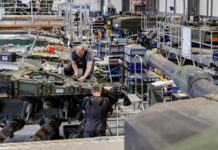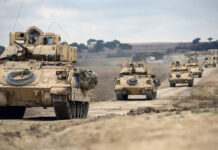Full motion video has become one of the most effective means of acquiring and sharing intelligence and situational awareness data. Commercial standards such as MPEG 2 and MPEG 4 are well established, enabling military users to employ Commercial Off The Shelf (COTS) systems and applications to capture, store, retrieve and distribute video imagery, from the field level to all command echelons. While the intelligence community has been using video recording technology for years, it hasn’t yet been accepted as an integral part of modern combat systems.
The emergence of high precision weaponry and growing concerns about collateral damage have made it necessary to equip warfighters, and their commanders and leaders at all levels, with tools that can document actions and events, in order to enable them to conduct better informed operations, and provide accountability for decisions and actions. The availability of this type of information, either locally developed or shared over a network, enables commanders to support every decision they make, assess actions and their consequences in after action reviews, and defend themselves in case of public scrutiny.
New solid-state digital recorders are now providing the tools for monitoring events in combat situations. In the past recorders were used mainly to track and record communications. Today’s digital recorders are providing the resources necessary to record analyze and present a multi-dimensional situational picture, which is developed and monitored at command posts, by sharing information collected at the individual level, by the warfighter, leader and commander at the lowest echelon. Miniature video recorders can capture snapshots every time the soldier aims and fires his rifle, or take video sequences from observations posts, or through sniper’s sights – information that can be relevant for situational understanding and decision making or, if something goes wrong, provide critical evidence in after-action investigations.
Continue reading this article:
- Digital Video Recorders Reach the Battlefield
- Avionic Solid-State Recorders
- Land Based Uses of Digital Recorders
- DVR – Military Applications
- Portable and Wearable Micro DVR
- High Capacity DVR
















